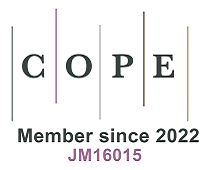REFERENCES
1. Liu, R. X.; Peng, L. W.; He, R. N.; Li, L. L.; Qiao, L. J. A high-performance continuous-flow MEA reactor for electroreduction CO2 to formate. J. Electrochem. 2022, 28, 2104231.
2. Zhuang, T.; Liang, Z.; Seifitokaldani, A.; et al. Steering post-C-C coupling selectivity enables high efficiency electroreduction of carbon dioxide to multi-carbon alcohols. Nat. Catal. 2018, 1, 421-8.
3. Gu, Y.; Yang, J.; Wang, D. Electrochemical features of carbon prepared by molten salt electro-reduction of CO2. Acta. Phys-Chim. Sin. 2019, 35, 208-14.
4. Xiang, D.; Li, K.; Li, M.; et al. Theory-guided synthesis of heterostructured Cu@Cu0.4W0.6 catalyst towards superior electrochemical reduction of CO2 to C2 products. Mater. Today. Phys. 2023, 33, 101045.
5. Wen, J.; Wan, Z.; Hu, X.; Huang, J.; Kang, X. Restructuring of copper catalysts by potential cycling and enhanced two-carbon production for electroreduction of carbon dioxide. J. CO2. Util. 2022, 56, 101846.
6. Wan, Z. X.; Kuchkaev, A.; Yakhvarov, D.; Kang, X. W. Monodispersed Cu-TCPP/Cu2O hybrid microspheres: a superior cascade electrocatalyst towards CO2 reduction to C2 products. J. Electrochem. 2023. DOI: 10.13208/j.electrochem.2303271.
7. Zhang, H.; Wang, X.; Chen, C.; et al. Selective CO2-to-formic acid electrochemical conversion by modulating electronic environment of copper phthalocyanine with defective graphene. Chin. J. Struct. Chem. 2023, 42, 100089.
8. Birdja, Y. Y.; Pérez-gallent, E.; Figueiredo, M. C.; Göttle, A. J.; Calle-vallejo, F.; Koper, M. T. M. Advances and challenges in understanding the electrocatalytic conversion of carbon dioxide to fuels. Nat. Energy. 2019, 4, 732-45.
9. Liu, M.; Peng, M.; Dong, B.; Teng, Y.; Feng, L.; et al. Explicating the role of metal centers in porphyrin-based MOFs of PCN-222(M) for electrochemical reduction of CO2. Chine. J. Struct. Chem. 2022, 41, 2207046-52.
10. Wang, Y.; Su, H.; He, Y.; et al. Advanced electrocatalysts with sngle-metal-atom active sites. Chem. Rev. 2020, 120, 12217-314.
11. Miao, K.; Qin, J.; Yang, J.; Kang, X. Synergy of Ni nanoclusters and single atom site: size effect on the performance of electrochemical CO2 reduction reaction and rechargeable Zn-CO2 batteries. Adv. Funct. Mater. 2024, 34, 2316824.
12. Qin, J.; Han, B.; Liu, X.; Dai, W.; Wang, Y.; et al. An enzyme-mimic single Fe-N3 atom catalyst for the oxidative synthesis of nitriles via C-C bond cleavage strategy. Sci. Adv. 2022, 8, eadd1267.
13. Fu, H.; Tian, J.; Zhang, Q.; et al. Single-atom modified graphene cocatalyst for enhanced photocatalytic CO2 reduction on halide perovskite. Chin. J. Catal. 2024, 64, 143-51.
14. Shi, G.; Xie, Y.; Du, L.; et al. Constructing Cu-C bonds in a graphdiyne-regulated Cu single-atom electrocatalyst for CO2 reduction to CH4. Angew. Chem. Int. Ed. Engl. 2022, 61, e202203569.
15. Guan, A.; Chen, Z.; Quan, Y.; et al. Boosting CO2 electroreduction to CH4 via tuning neighboring single-copper sites. ACS. Energy. Lett. 2020, 5, 1044-53.
16. Deng, Y.; Zhao, J.; Wang, S.; et al. Operando spectroscopic analysis of axial oxygen-coordinated single-Sn-atom sites for electrochemical CO2 reduction. J. Am. Chem. Soc. 2023, 145, 7242-51.
17. Wang, J.; Zhang, K.; Nga, T. T. T.; et al. Chalcogen heteroatoms doped nickel-nitrogen-carbon single-atom catalysts with asymmetric coordination for efficient electrochemical CO2 reduction. Chin. J. Catal. 2024, 64, 54-65.
18. Purbia, R.; Choi, S. Y.; Woo, C. H.; et al. Highly selective and low-overpotential electrocatalytic CO2 reduction to ethanol by Cu-single atoms decorated N-doped carbon dots. Appl. Catal. B:. Environ. 2024, 345, 123694.
19. Cai, Y.; Fu, J.; Zhou, Y.; et al. Insights on forming N,O-coordinated Cu single-atom catalysts for electrochemical reduction CO2 to methane. Nat. Commun. 2021, 12, 586.
20. Dai, Y.; Li, H.; Wang, C.; et al. Manipulating local coordination of copper single atom catalyst enables efficient CO2-to-CH4 conversion. Nat. Commun. 2023, 14, 3382.
21. Yan, H.; Cheng, H.; Yi, H.; et al. Single-atom Pd1/graphene catalyst achieved by atomic layer deposition: remarkable performance in selective hydrogenation of 1,3-butadiene. J. Am. Chem. Soc. 2015, 137, 10484-7.
22. Hossain, M. D.; Huang, Y.; Yu, T. H.; Goddard, W. A. I. I. I.; Luo, Z. Reaction mechanism and kinetics for CO2 reduction on nickel single atom catalysts from quantum mechanics. Nat. Commun. 2020, 11, 2256.
23. Liu, P.; Zhao, Y.; Qin, R.; Mo, S.; Chen, G.; et al. Photochemical route for synthesizing atomically dispersed palladium catalysts. Science 2016, 352, 797-800.
24. Hu, R.; Li, Y.; Zeng, Q.; Shang, J. Role of active sites in N-coordinated Fe-Co dual-metal doped graphene for oxygen reduction and evolution reactions: a theoretical insight. Appl. Surf. Sci. 2020, 525, 146588.
25. Fauzi, A.; Chen, X.; Zhao, H.; et al. Recent progress of M-N-C single atom electrocatalysts for carbon dioxide reduction reaction. Next. Energy. 2023, 1, 100045.
26. Jin, M.; He, G.; Zhang, H.; Zeng, J.; Xie, Z.; Xia, Y. Shape-controlled synthesis of copper nanocrystals in an aqueous solution with glucose as a reducing agent and hexadecylamine as a capping agent. Angew. Chem. Int. Ed. Engl. 2011, 50, 10560-4.
27. Segall, M.; Lindan, P. J.; Probert, M. A.; et al. First-principles simulation: ideas, illustrations and the CASTEP code. J. Phys. Condens. Matter. 2002, 14, 2717.
28. Perdew, J. P.; Ernzerhof, M.; Burke, K. Rationale for mixing exact exchange with density functional approximations. J. Chem. Phys. 1996, 105, 9982-5.
29. Perdew, J. P.; Burke, K.; Ernzerhof, M. Generalized gradient approximation made simple. Phys. Rev. Lett. 1996, 77, 3865.
30. Vanderbilt, D. Soft self-consistent pseudopotentials in a generalized eigenvalue formalism. Phys. Rev. B. 1990, 41, 7892.
31. Kresse, G.; Furthmüller, J. Efficiency of ab-initio total energy calculations for metals and semiconductors using a plane-wave basis set. Comput. Mater. Sci. 1996, 6, 15-50.
32. Zhou, Y.; Wei, F.; Qi, H.; et al. Peripheral-nitrogen effects on the Ru1 centre for highly efficient propane dehydrogenation. Nat. Catal. 2022, 5, 1145-56.
33. Guo, C.; Zhang, T.; Deng, X.; et al. Electrochemical CO2 reduction to C1 products on single Nickel/Cobalt/Iron-doped graphitic carbon nitride: a DFT study. ChemSusChem 2019, 12, 5126-32.
34. Lancet, D.; Pecht, I. Spectroscopic and immunochemical studies with nitrobenzoxadiazolealanine, a fluorescent dinitrophenyl analogue. Biochemistry 1977, 16, 5150-7.
35. Lu, Z.; Chen, G.; Siahrostami, S.; et al. High-efficiency oxygen reduction to hydrogen peroxide catalysed by oxidized carbon materials. Nat. Catal. 2018, 1, 156-62.
36. Liu, X.; Huang, L.; Ma, Y.; et al. Enable biomass-derived alcohols mediated alkylation and transfer hydrogenation. Nat. Commun. 2024, 15, 7012.
37. Song, P.; Hu, B.; Zhao, D.; et al. Modulating the asymmetric atomic interface of copper single atoms for efficient CO2 electroreduction. ACS. Nano. 2023, 17, 4619-28.
38. Zhang, X.; Xia, M.; Liu, T.; et al. Copper hexacyanoferrate as ultra-high rate host for aqueous ammonium ion storage. Chem. Eng. J. 2021, 421, 127767.
39. Yang, F.; Ma, X.; Cai, W. B.; Song, P.; Xu, W. Nature of oxygen-containing groups on carbon for high-efficiency electrocatalytic CO2 reduction reaction. J. Am. Chem. Soc. 2019, 141, 20451-9.
40. Cheng, X. F.; He, J. H.; Ji, H. Q.; et al. Coordination symmetry breaking of single-atom catalysts for robust and efficient nitrate electroreduction to ammonia. Adv. Mater. 2022, 34, e2205767.
41. Xie, C.; Lin, L.; Huang, L.; et al. Zn-Nx sites on N-doped carbon for aerobic oxidative cleavage and esterification of C(CO)-C bonds. Nat. Commun. 2021, 12, 4823.
42. Rehr, J. J.; Albers, R. C. Theoretical approaches to x-ray absorption fine structure. Rev. Mod. Phys. 2000, 72, 621.
43. Wang, Z.; Li, Y.; Zhao, X.; et al. Localized alkaline environment via in situ electrostatic confinement for enhanced CO2-to-ethylene conversion in neutral medium. J. Am. Chem. Soc. 2023, 145, 6339-48.
44. Wen, G.; Ren, B.; Wang, X.; et al. Continuous CO2 electrolysis using a CO2 exsolution-induced flow cell. Nat. Energy. 2022, 7, 978-88.
45. Sinthika, S.; Vala, S. T.; Kawazoe, Y.; Thapa, R. CO oxidation prefers the eley-rideal or langmuir-hinshelwood pathway: monolayer vs thin film of SiC. ACS. Appl. Mater. Interfaces. 2016, 8, 5290-9.
46. Fan, Q.; Zhang, M.; Jia, M.; Liu, S.; Qiu, J.; Sun, Z. Electrochemical CO2 reduction to C2+ species: heterogeneous electrocatalysts, reaction pathways, and optimization strategies. Mater. Today. Energy. 2018, 10, 280-301.
47. Li, M.; Zhang, F.; Kuang, M.; et al. Atomic Cu sites engineering enables efficient CO2 electroreduction to methane with high CH4/C2H4 ratio. Nanomicro. Lett. 2023, 15, 238.
48. Jeon, S. S.; Kang, P. W.; Klingenhof, M.; Lee, H.; Dionigi, F.; Strasser, P. Active surface area and intrinsic catalytic oxygen evolution reactivity of NiFe LDH at reactive electrode potentials using capacitances. ACS. Catal. 2023, 13, 1186-96.
49. Mao, X.; Wijethunge, D.; Zhang, L.; et al. Metal-free graphene/boron nitride heterointerface for CO2 reduction: surface curvature controls catalytic activity and selectivity. EcoMat 2020, 2, e12013.
50. Xun, W.; Yang, X.; Jiang, Q.; Wang, M.; Wu, Y.; Li, P. Single-atom-anchored two-dimensional MoSi2N4 monolayers for efficient electroreduction of CO2 to formic acid and methane. ACS. Appl. Energy. Mater. 2023, 6, 3236-43.
51. Guan, A.; Fan, Y.; Xi, S.; et al. Nitrogen-adsorbed hydrogen species promote CO2 methanation on Cu single-atom electrocatalyst. ACS. Mater. Lett. 2023, 5, 19-26.
52. Luo, Y.; Yang, J.; Qin, J.; et al. Cobalt phthalocyanine promoted copper catalysts toward enhanced electro reduction of CO2 to C2: synergistic catalysis or tandem catalysis? J. Energy. Chem. 2024, 92, 499-507.
53. Zhou, L.; Lv, R. Rational catalyst design and interface engineering for electrochemical CO2 reduction to high-valued alcohols. J. Energy. Chem. 2022, 70, 310-31.









